Yield 1 quart/1 liter
Level of difficulty 2–REALLY!
Notes: This is a non-sous vide recipe engineered to create sauces commonly used in our recipe database.

Start with the trim from one beef tenderloin or other sub primal cut that yields some scrap–even pork or chicken. Put the trim in the cold skillet and turn the burner on medium low. We want to slowly brown the meat. We also want to render as much fat out as possible, so as to avoid the necessity of doing so later. The surface of the pan should hover around 225 F/107 C.
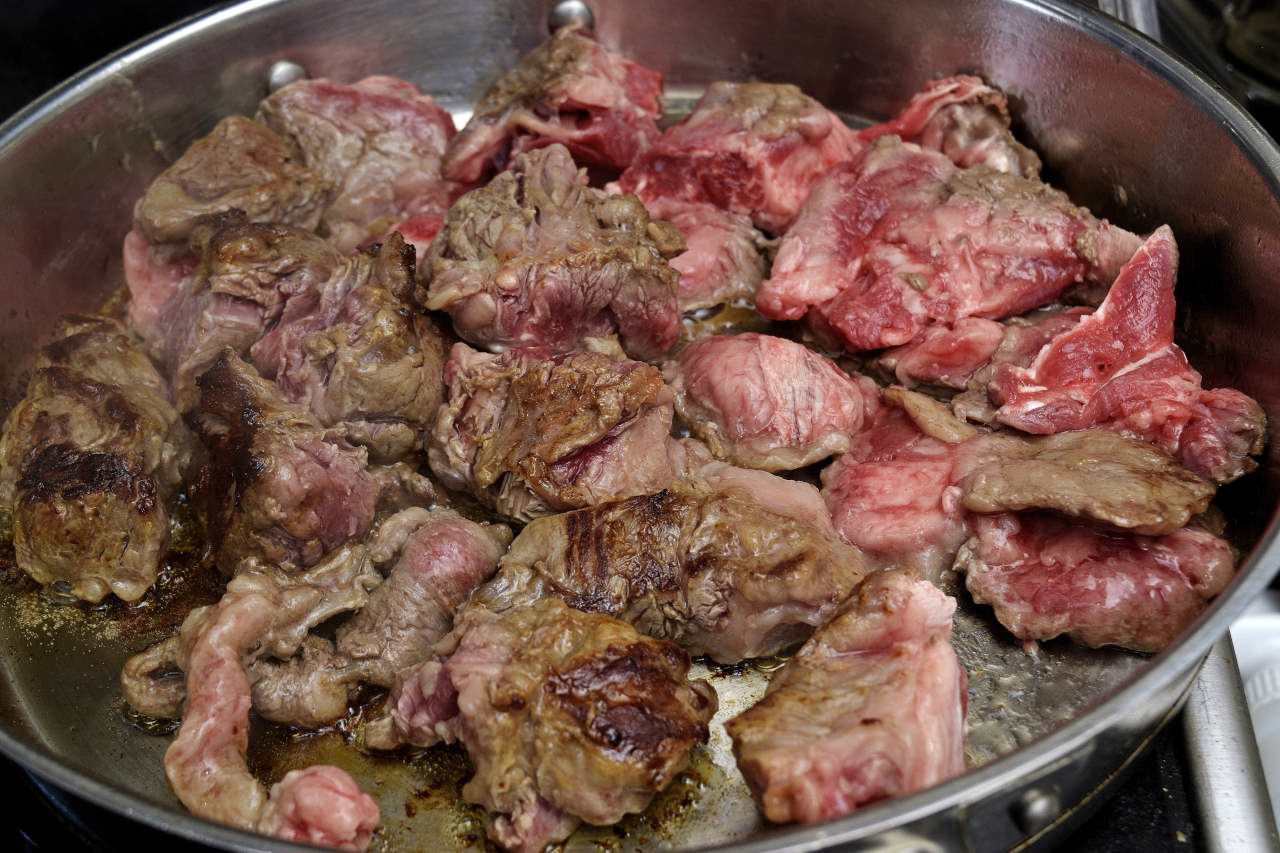
Do not stir excessively. Why not? Because it’s not necessary. It actually slows down the caramelization/Maillard processes. Chefs multitask and if you only return to the process once every half hour or so, your espagnole will still come out perfect. If your sauce does NOT come out properly, it will not be because you did not stir it enough. Really.
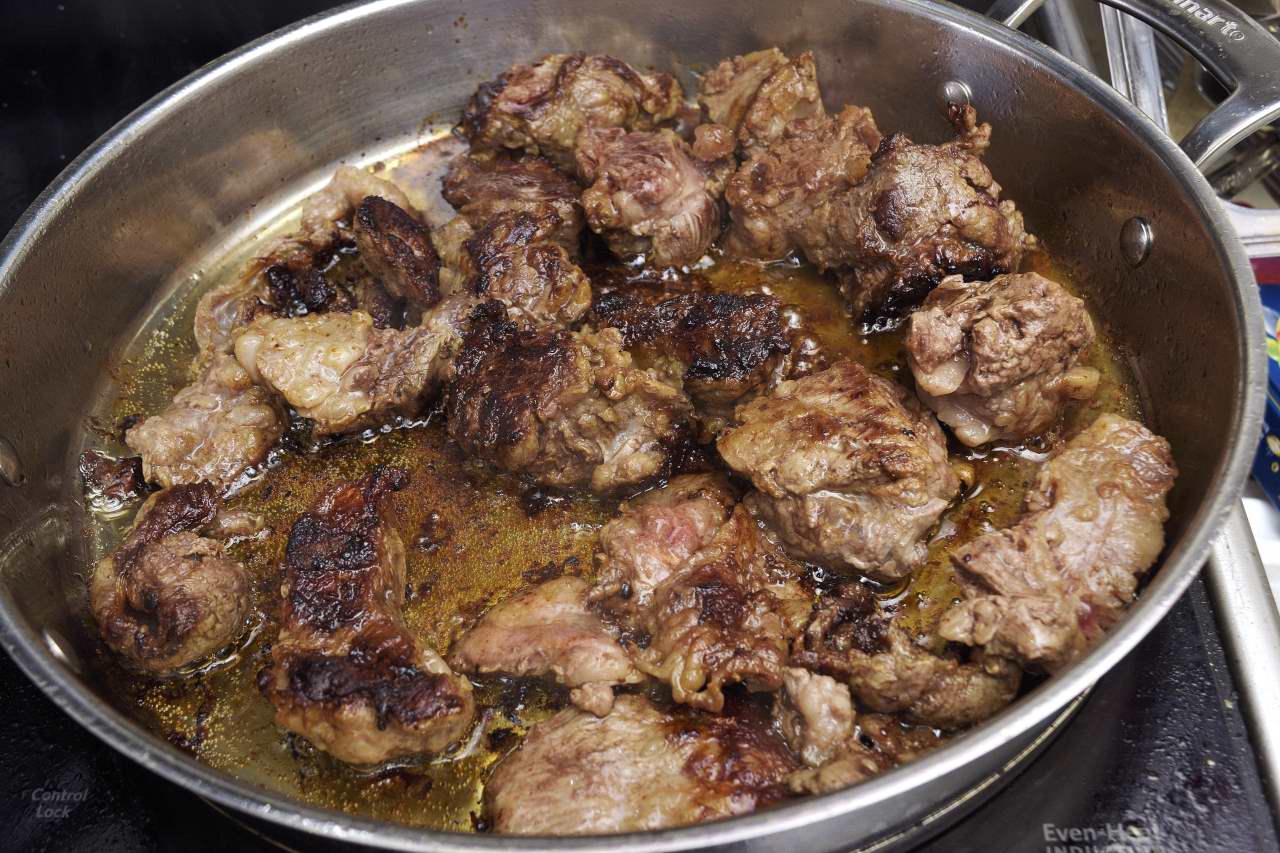
The only reason you stir is to make sure that all the surfaces of the trim are exposed to the direct heat of the pan at some point. This first step should take at least half an hour. The melted beef fat will accumulate in the pan.
Recipes always say to remove excess fat, but they usually don’t tell you how. Push some meat away from the handle side of the pan. That is usually the lowest spot on the surface because of the weight of that handle. If there is no handle, it does not matter. Fold up a paper towel or two and put it in the opening that you created. In a few seconds it will absorb all the excess oil. Really.
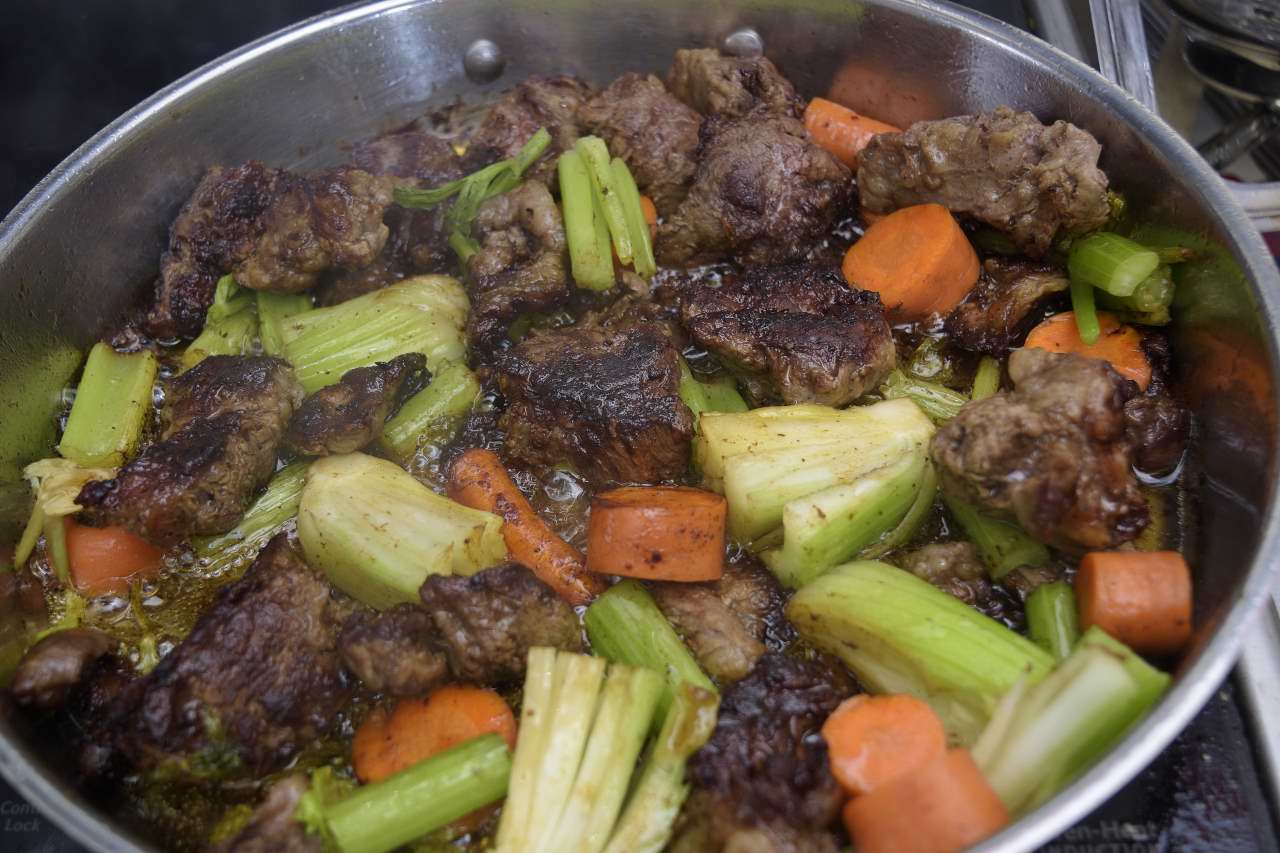
Add the celery and carrots, but not the onions. Why not? Because onions brown faster than celery and carrots. Stir just enough to bring the celery and carrots into contact with the surface of the pan. Find something else to do for a half an hour. Really.

After the half hour has elapsed, add the onions. Stir enough to bring them all into contact with the surface of the pan. Again, not difficult. Easy, after you have done it a few times. Almost boring. “Time to make the brown sauce, sigh.” Come back in half an hour.
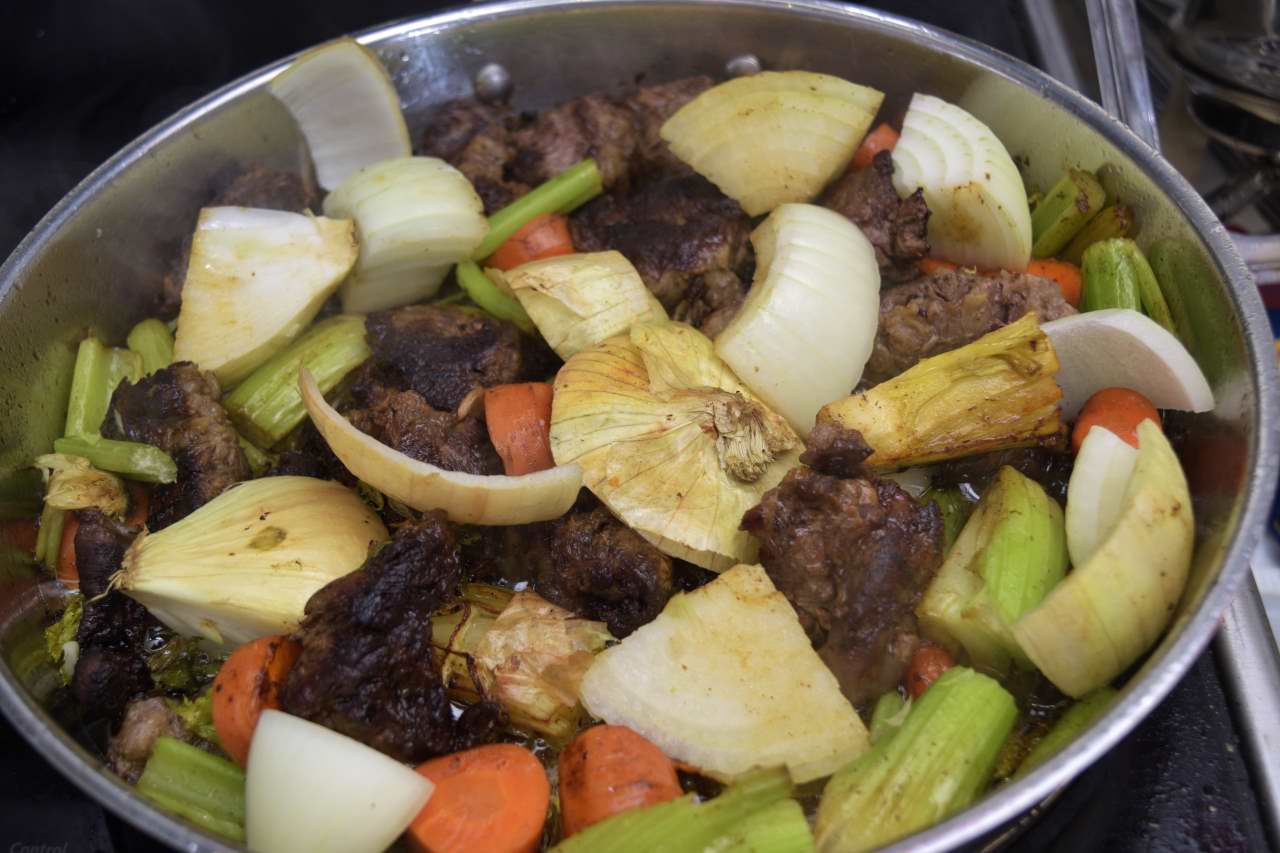
Stir once, just to make sure all of the surfaces get browned. Come back in fifteen minutes or so. Really. It’s not hard. Stand up straight.
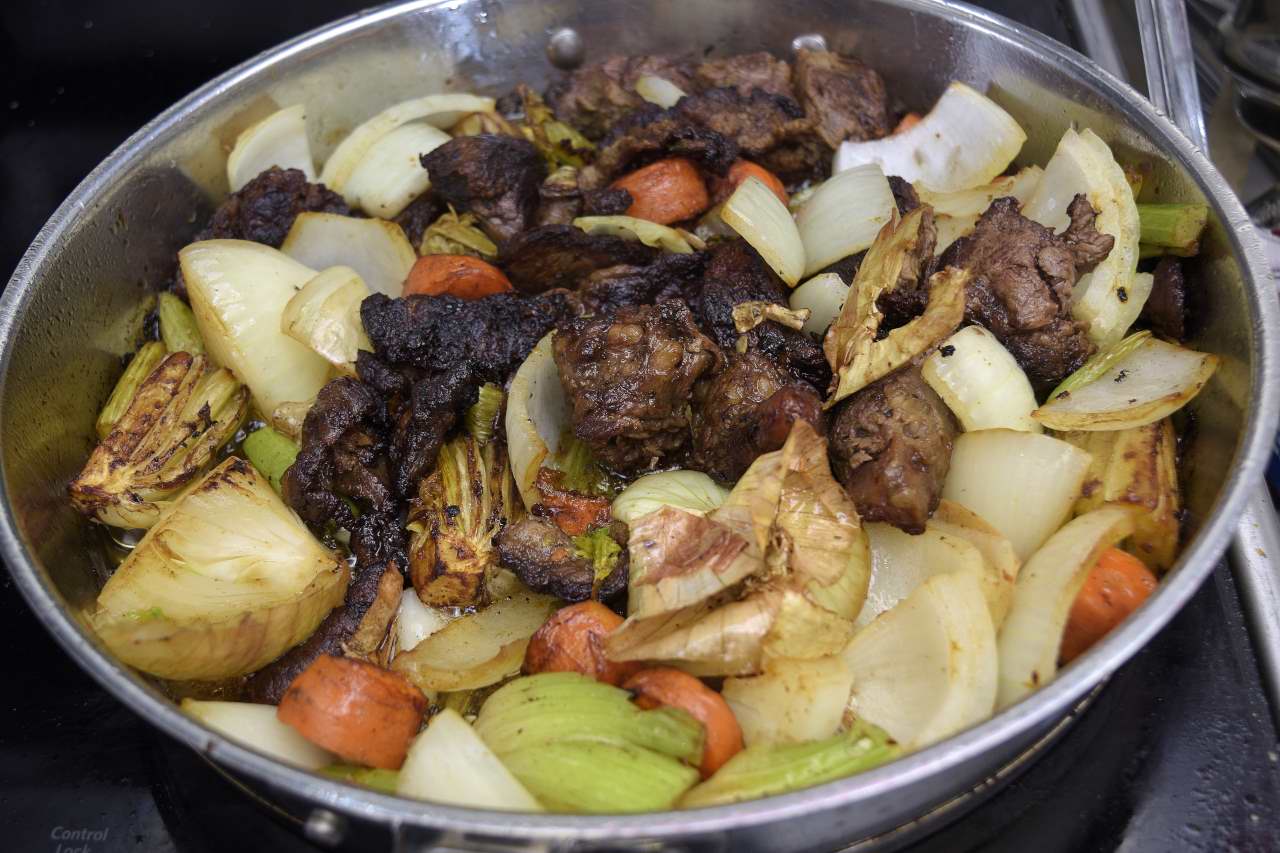
This is what we want. Everything is quite brown. A few spots might even look almost burnt. That’s okay. That’s what makes it brown.
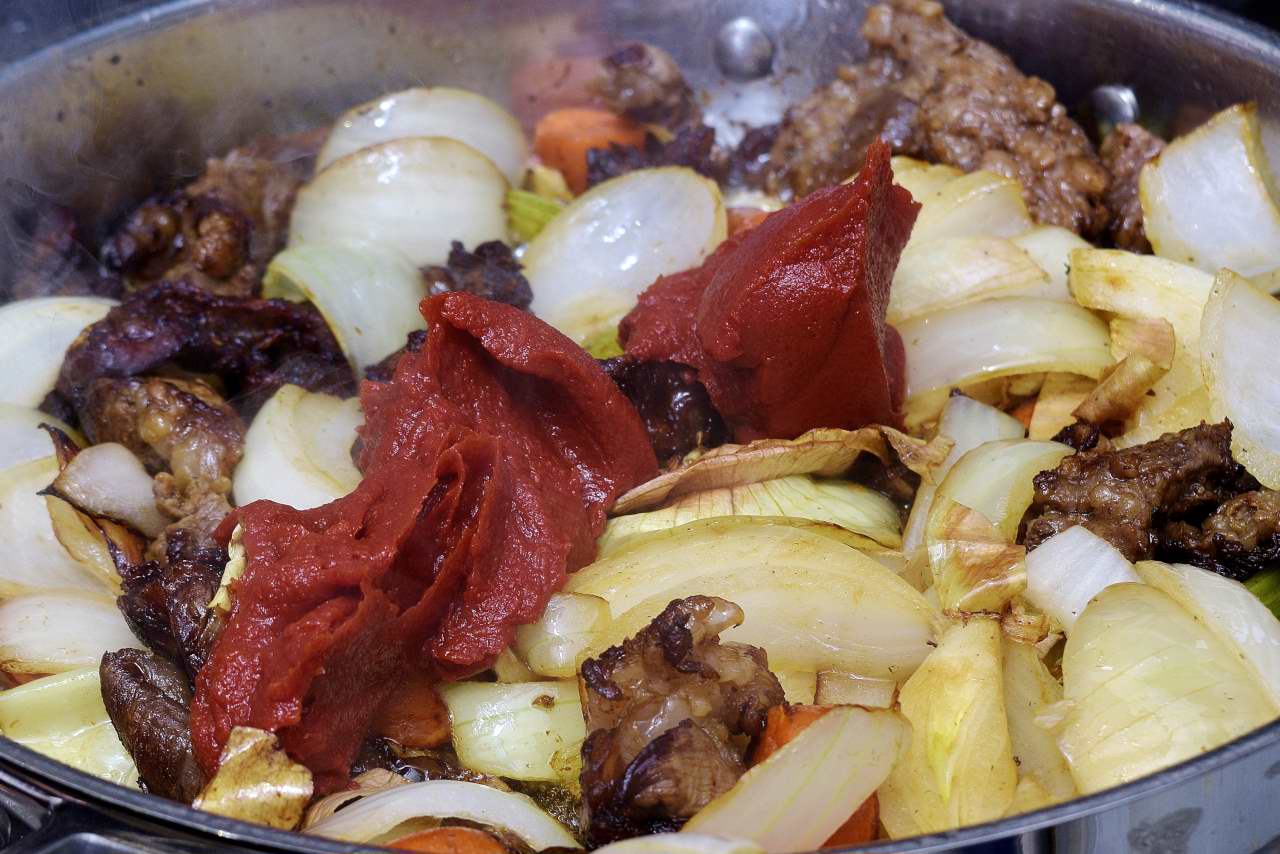
Add the tomato paste to the pan.
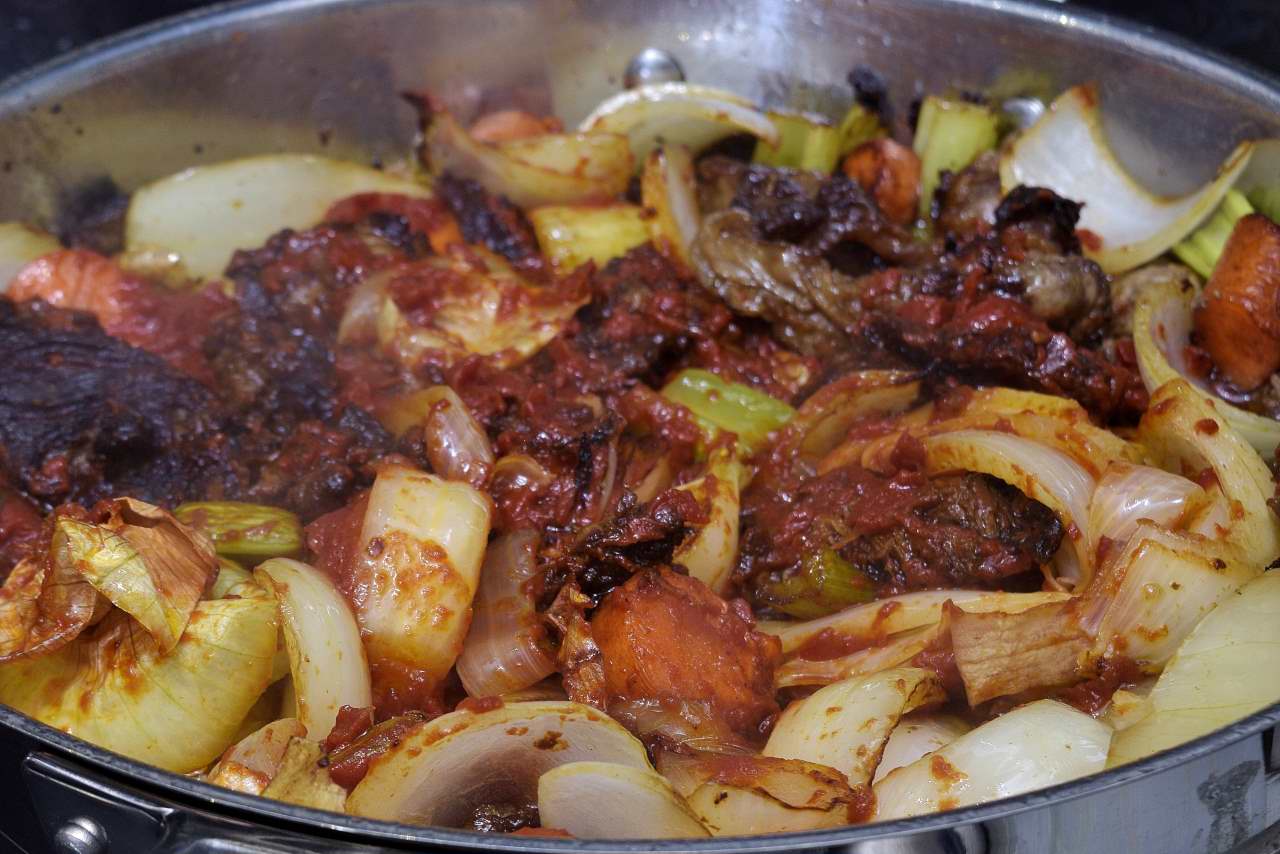
Stir just enough so that the vegetables are coated with the paste and comes in contact with the surface of the pan. Do you see a pattern developing? Really.
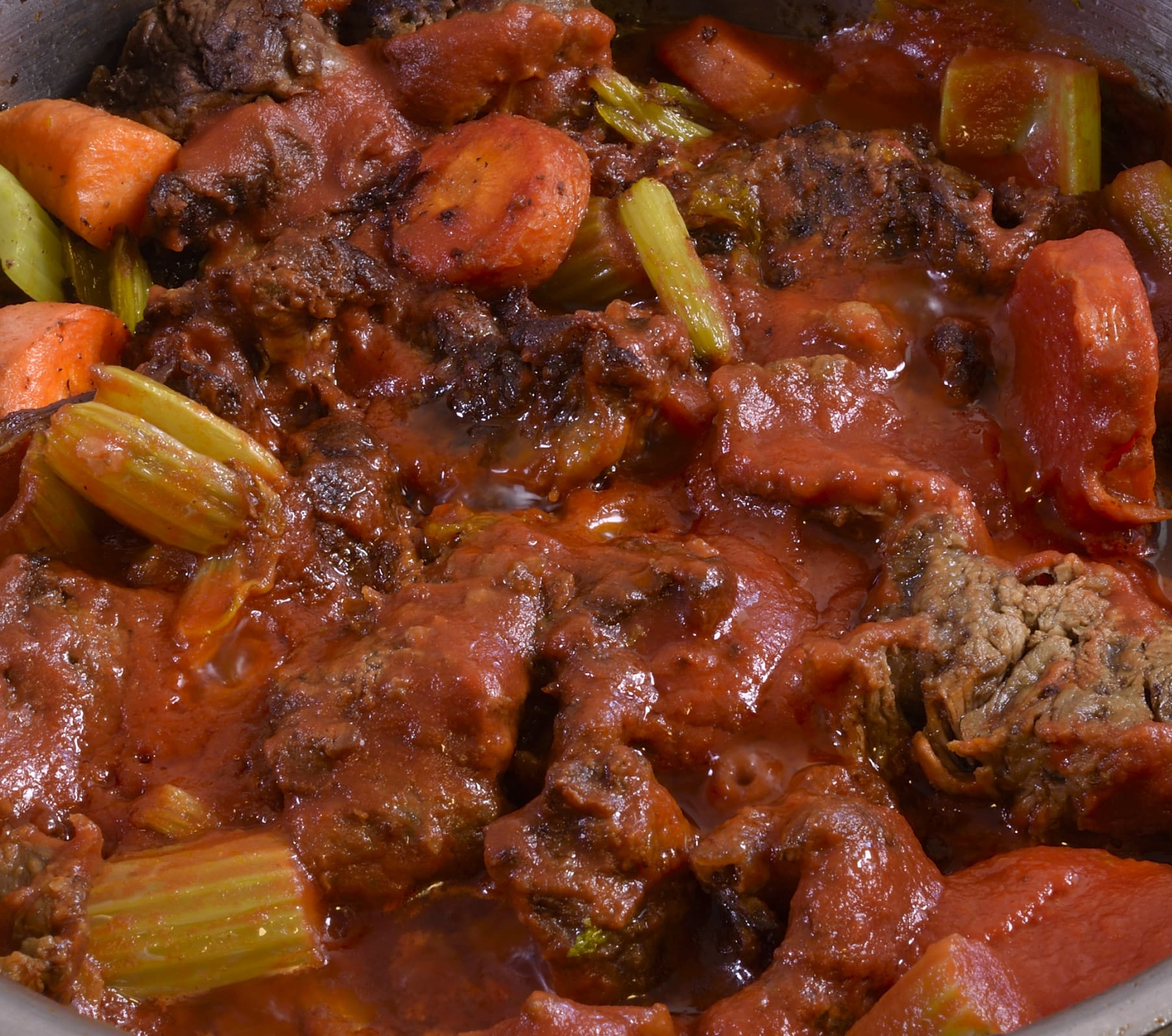
Come back in half an hour.
 Now it starts getting interesting. Add the wine to the pan. Stir to remove the debris from the bottom of the pan.
Now it starts getting interesting. Add the wine to the pan. Stir to remove the debris from the bottom of the pan.
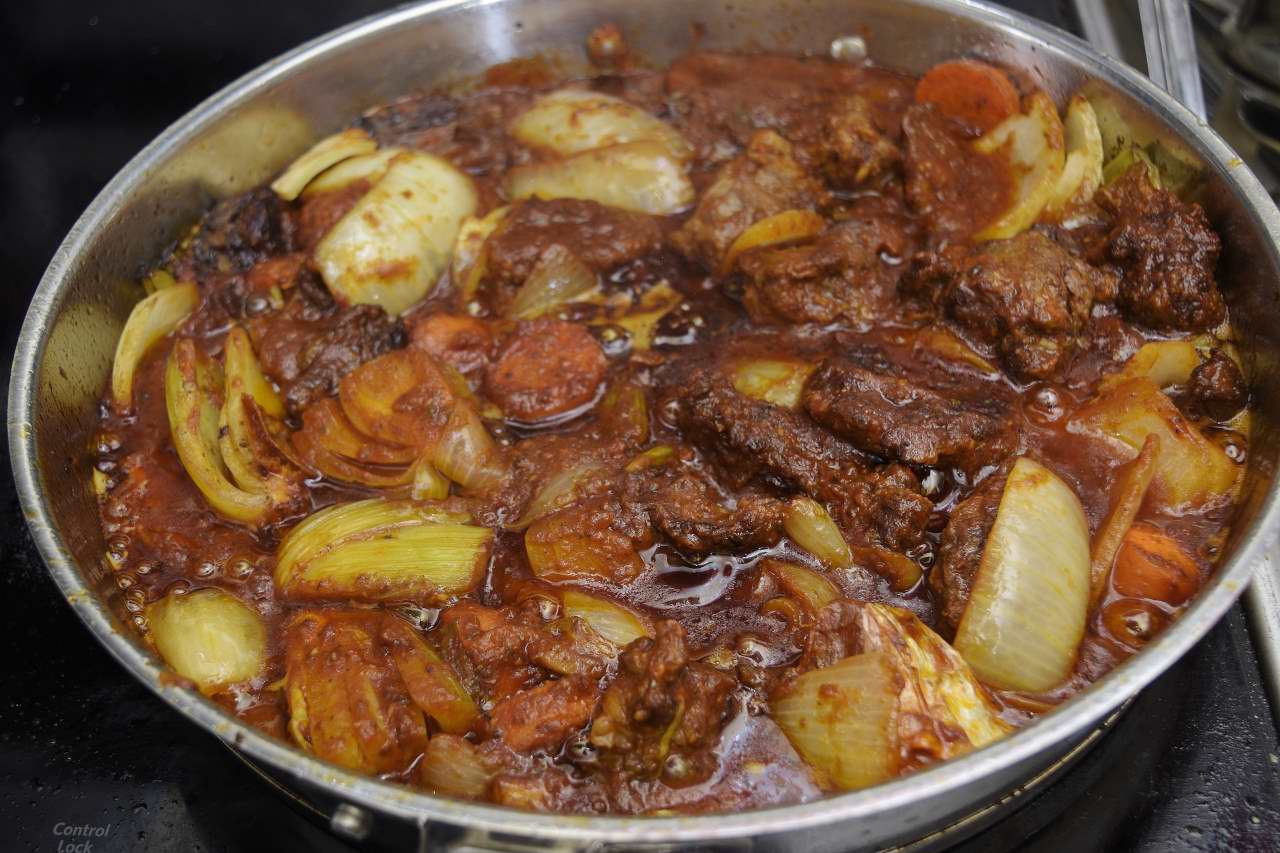
Reduce the wine to almost nothing–wine provides flavor–not volume.
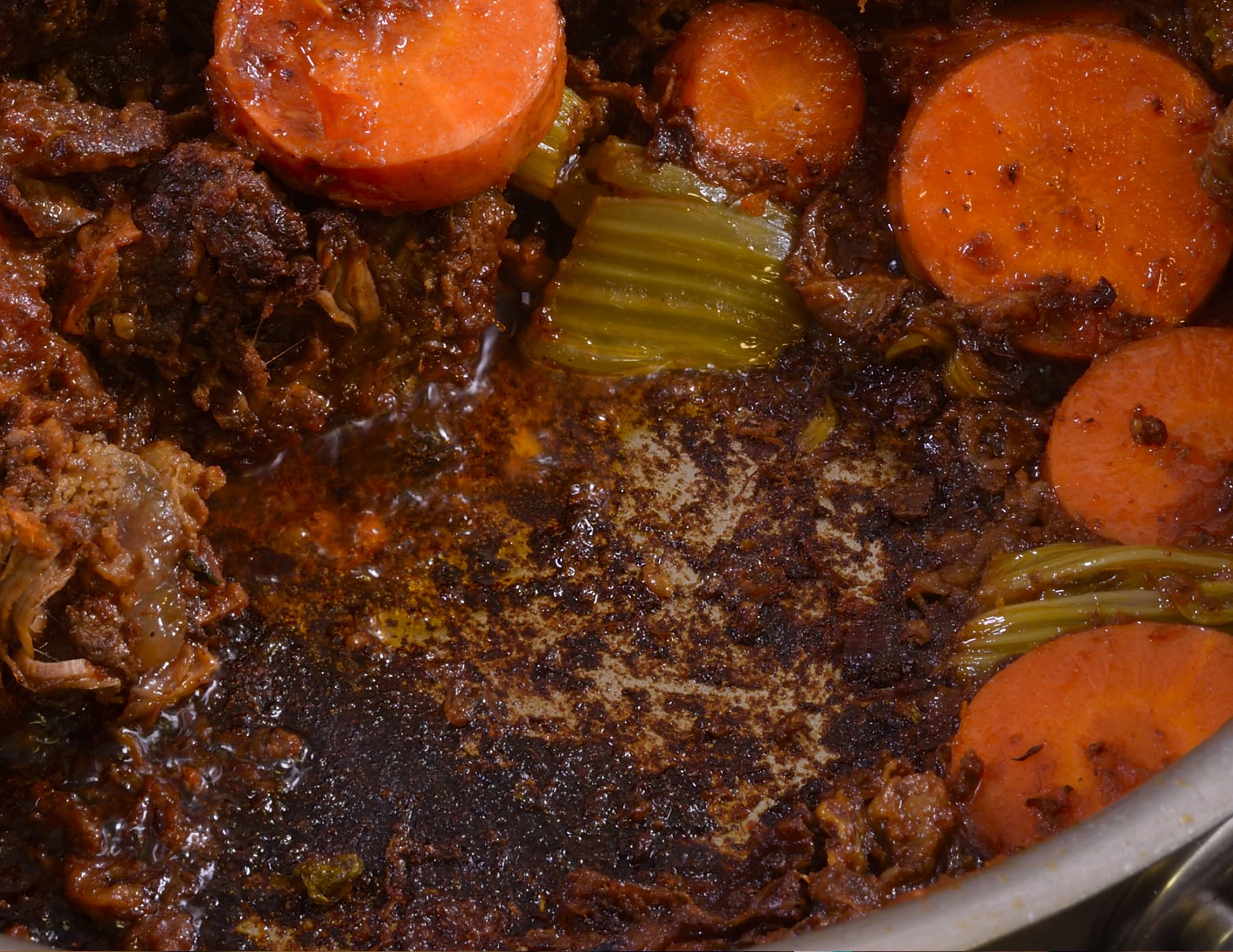
You can see some crust developing on the bottom of the pan. If you see blue smoke, you have a problem. Otherwise, everything will be fine. Do not worry.
Add the 2 quarts/2 liters of water/stock.

Bring to a simmer, stir down to help the crust dissolve into the liquid.

Bring to a simmer.

Bring just to a boil. Reduce the heat and simmer the sauce for two hours, stirring occasionally. Pour the sauce through a colander and skim off the fat into a cup or glass.
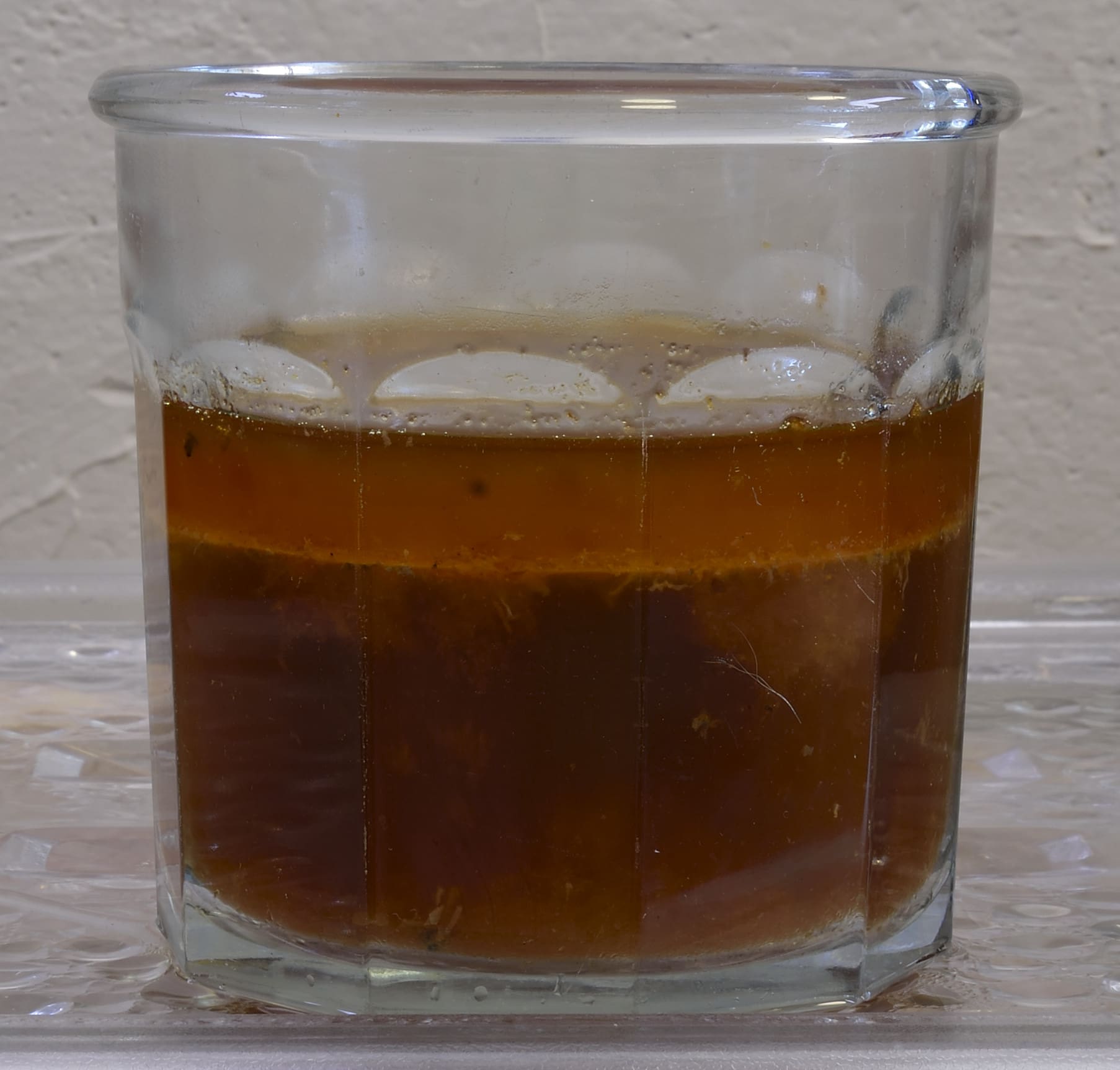
Do not discard. Refrigerate and the fat on the top will solidify. It can then be removed and that certain amount of stock can be retrieved.
In a clean pot, scramble together 3 egg whites (3 oz/90 ml) with 0.5 cups/110 ml COLD water. Pour the hot stock over the egg whites (not the other way around). Return the pot with this mixture to a burner and apply medium high heat–do not walk away. As the stock begins to come to a boil, you will see a “raft” begin to form on the top of the stock. This is the albumen protein in the egg whites attracting the other proteins in the stock that cause the cloudy appearance. DO NOT WHIP the stock. Reduce the heat to a bare simmer and allow the raft to continue forming for 15 minutes. Turn off the burner.

You can see how the stock has what appears to be darkened scrambled eggs scattered through it. This is the same effect that we describe in the article linked HERE.
Set the colander or strainer over a large container and line with moistened paper towels (or cheesecloth). Moistening the paper towel prevents the flavorful stock from clinging to the fabric.
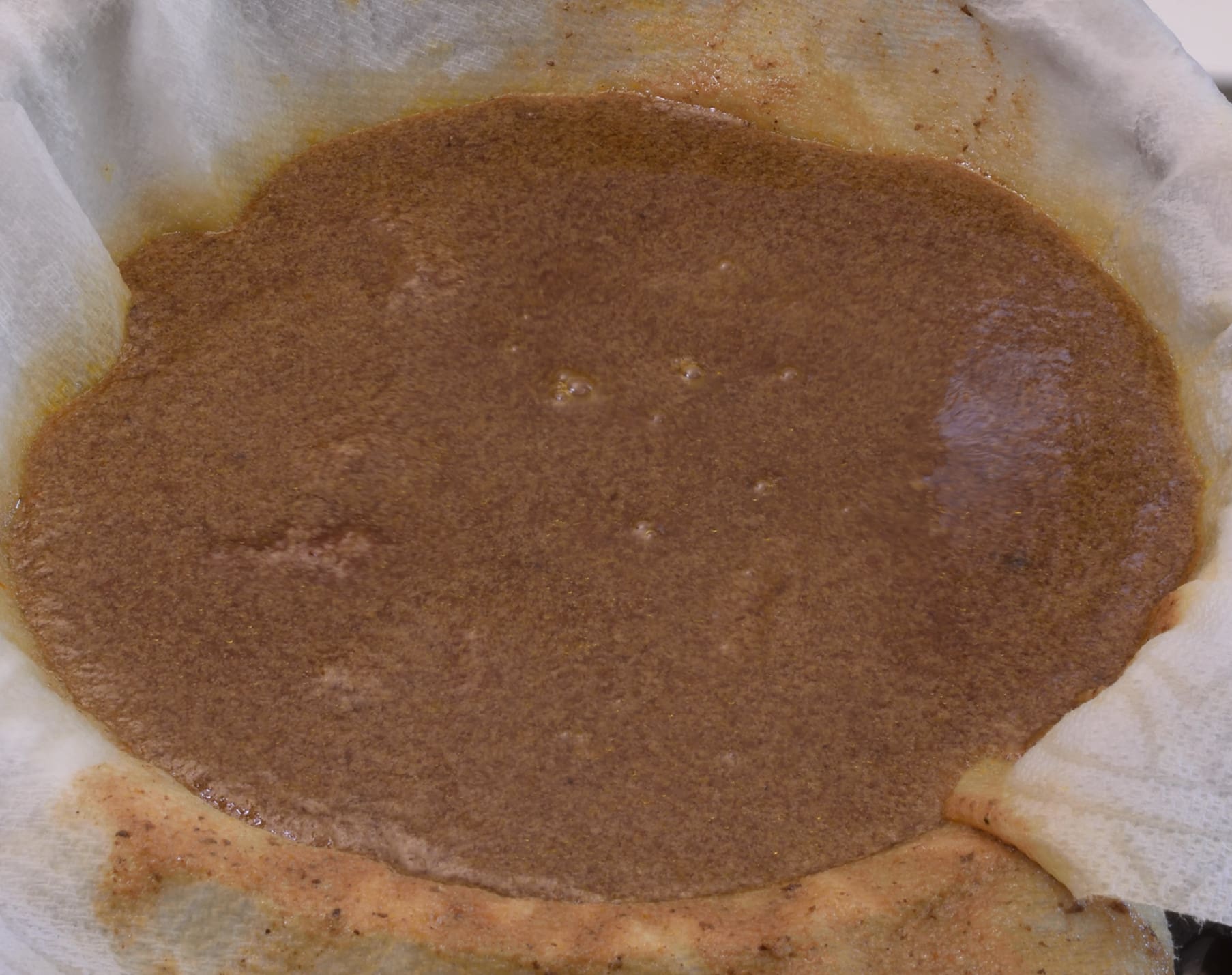
Slowly stage the stock into the moistened paper towels.

The moistened paper towels will catch all the debris and albumins in the stock.
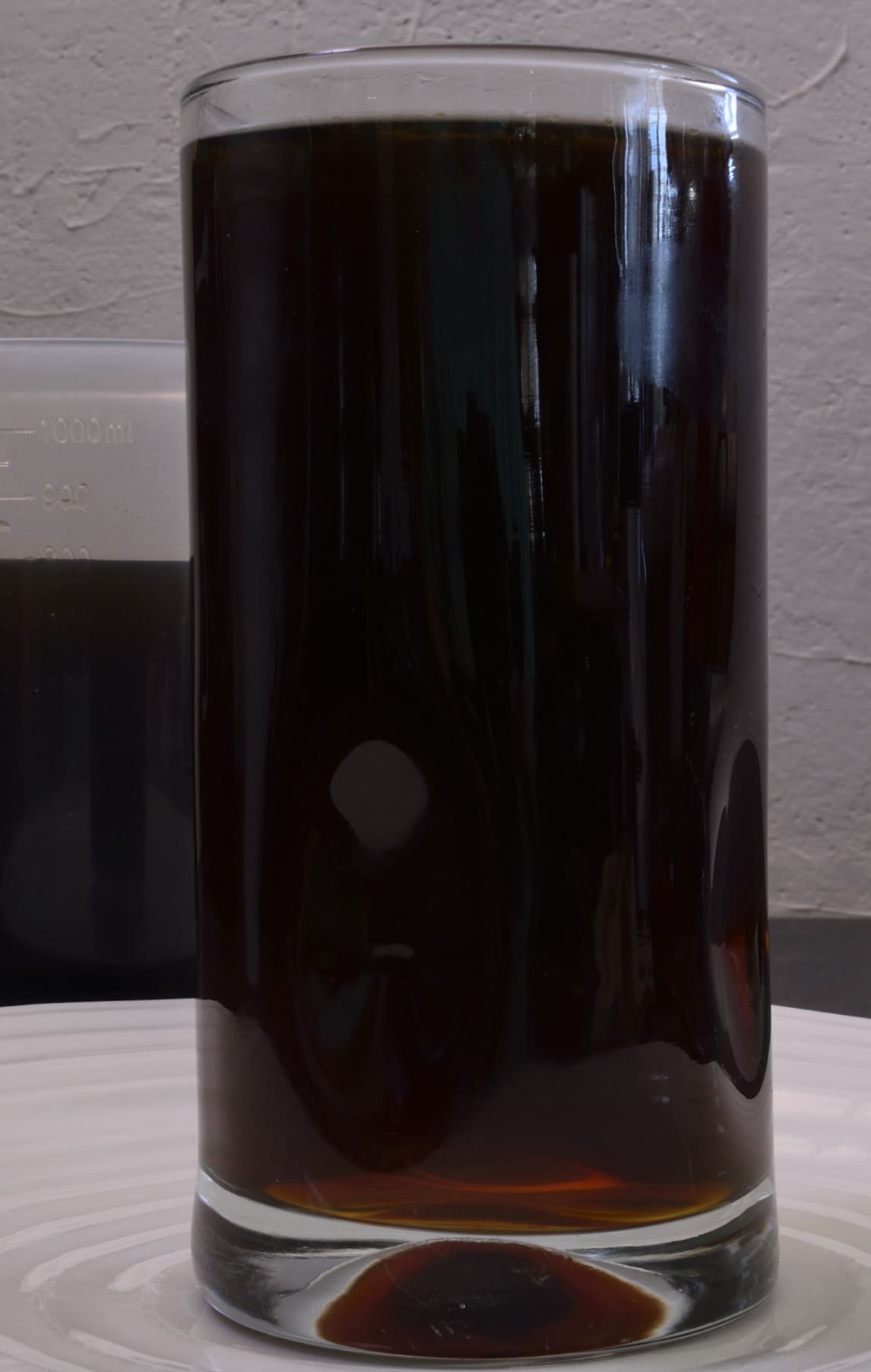
Reduce to approximately one quart to strengthen the broth to the desired degree of flavor and color.
You can use this stock to make espagnole/brown gravy by thickening it with roux, or you can continue to reduce it until it becomes a thin syrup.
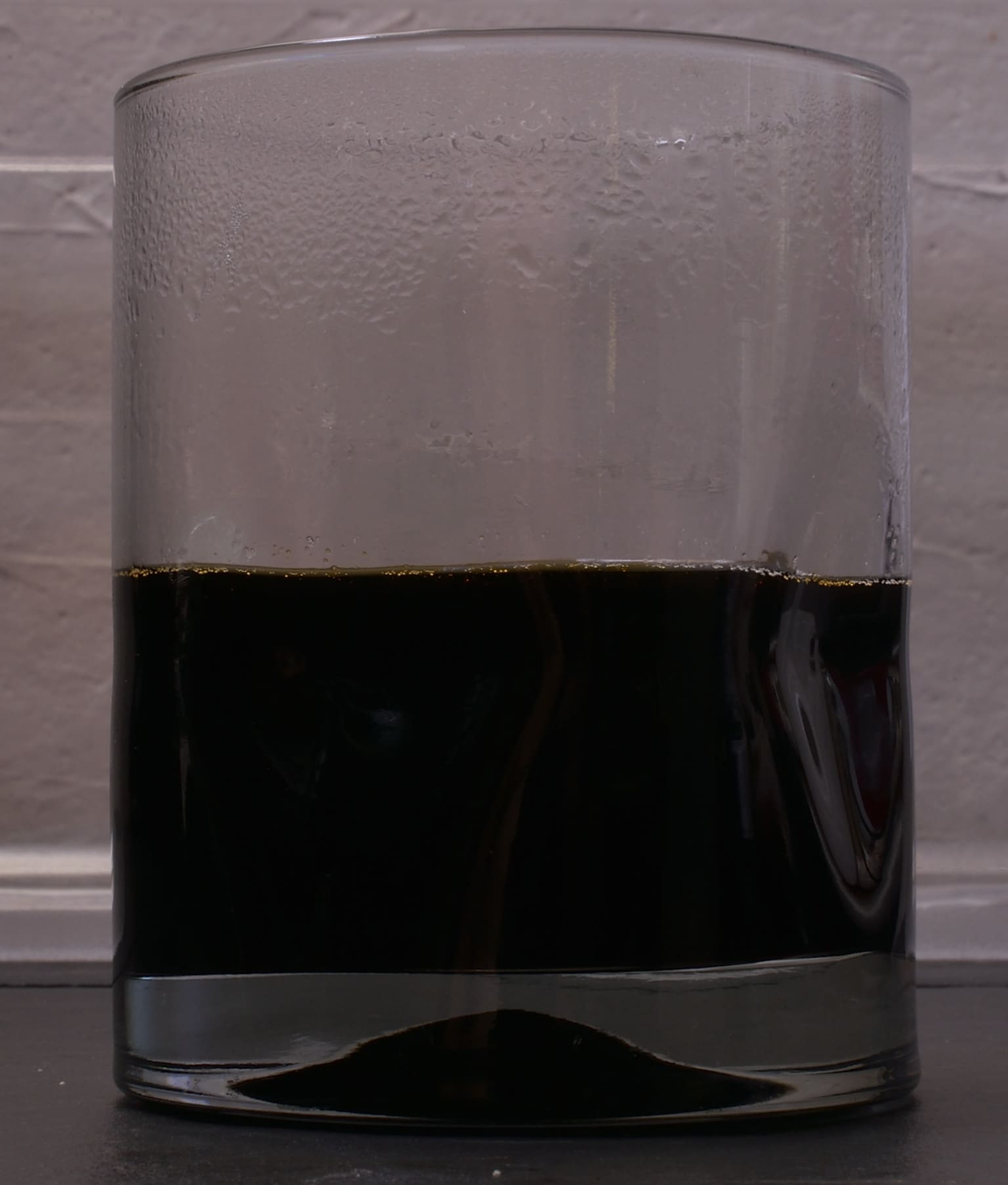
You would be surprised how many cooks and even chefs have forgotten how to do this, thanks to companies like McCormick and Knorr. I have nothing against pre-fabricated sauces. The tend to have a little too much sodium in them. If you continue to reduce, you will achieve this:

Reducing it even further still will give you this:
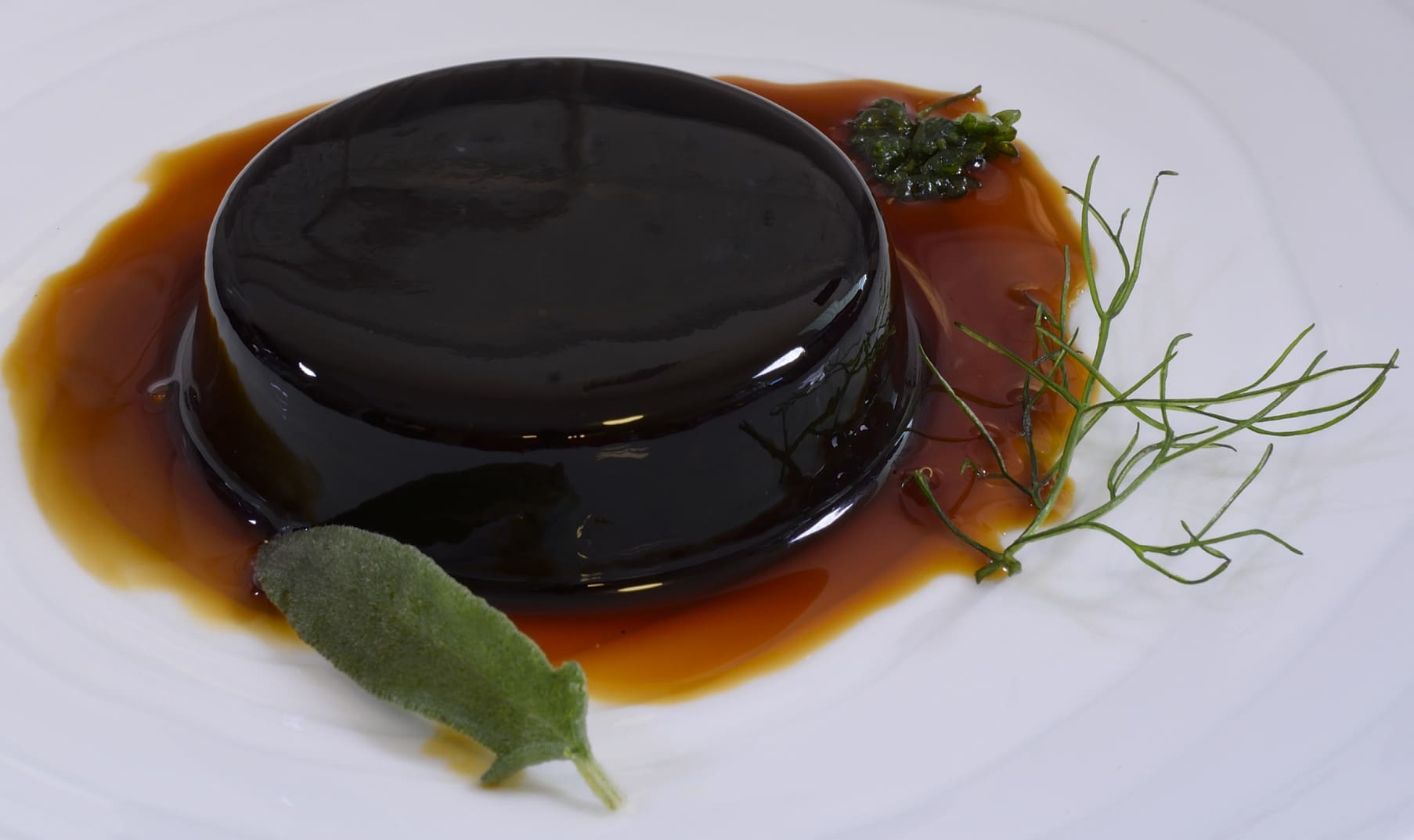
We should at least make an effort to remember how to make these products ourselves. Otherwise, we will just be discarding all that trim. That’s crazy.
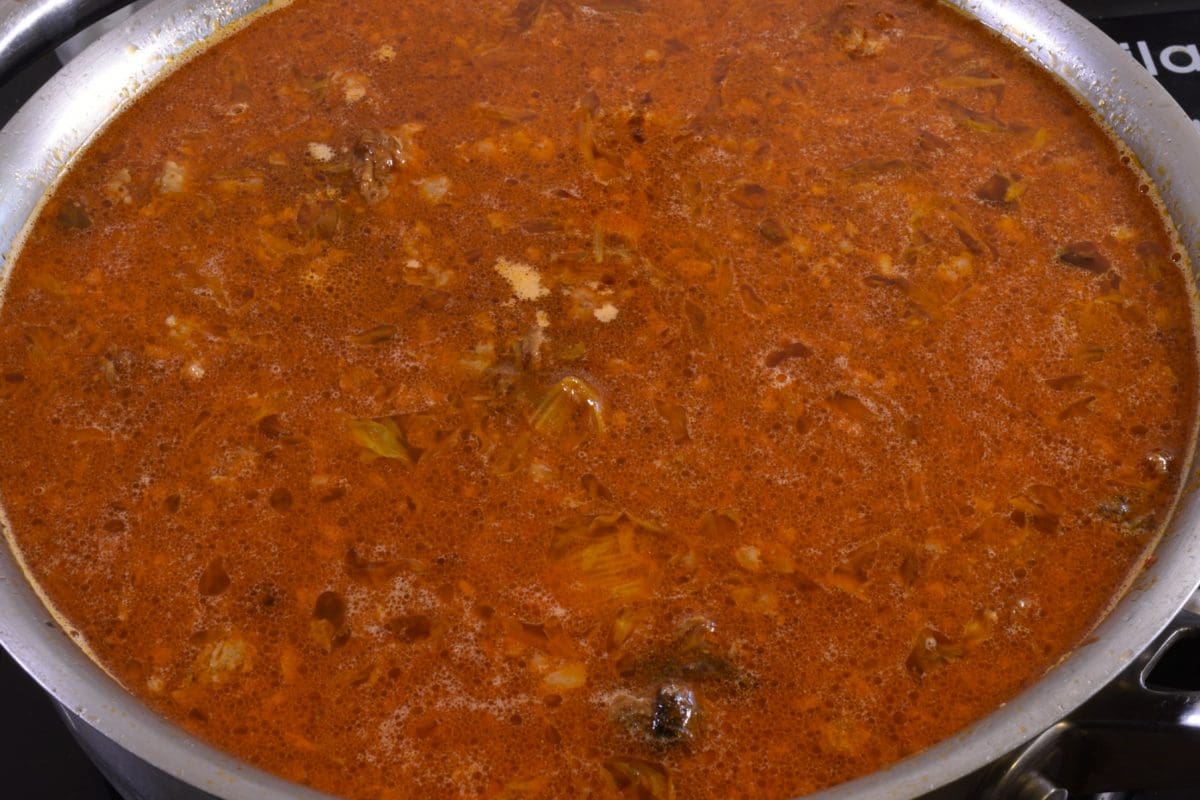
I really like reading through a post that can make men and women think. Also, thank you for allowing me to comment!
you’re in point of fact a just right webmaster. The site loading velocity is incredible. It sort of feels that you’re doing any distinctive trick. Moreover, The contents are masterwork. you’ve performed a great job on this subject!
Официальный сайт Gama casino
quiero jugar mucho contigo real cams show, me encanta hablarte caliente
https://virtual-local-numbers.com/countries/1300-new-york-phone.number.html
Everything is very open with a very clear
description of the challenges. It was really informative.
Your website is very helpful. Many thanks for sharing!